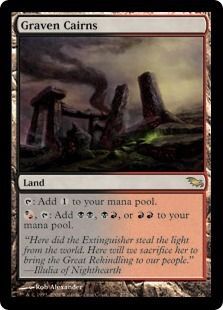

The EC does not identify the dissolved salts, or the effects they have on crops and soil, but gives a fairly reliable indication of salinity problems. Salinity of water is usually estimated from its electrical conductivity (EC), which may be converted to total dissolved solids (TDS). Data presented are only general guidelines for summer daytime sprinkling. Leaf injury is influenced by cultural and environmental conditions such as drying winds, low humidity, speed of rotation of sprinklers and timing and frequency of irrigations. Table 3 Chloride and sodium concentrations in irrigation water causing damage to leaves SensitivityĬauliflower, cotton, safflower, sesame, sorghum, sunflower Table 3 shows chloride and sodium concentrations in irrigation water that will damage the leaves of certain crops. Some crops which are not sensitive to root uptake of chloride or sodium ions develop symptoms of leaf burn when sprinkled with saline water.ĭamage is most severe during hot dry conditions because evaporation concentrates the salts on leaf surfaces. Myrobolan plum (for budding plums and apricots) Marianna plum (for budding plums and apricots) Table 2 Chloride upper tolerance limits for some fruit crops, cultivars and rootstocks by root uptake Crop (variety/rootstock)Ĭhloride concentration in irrigation water Fruit leaves usually suffer from toxicity when the dried leaves contain more than 0.2% sodium or 0.5% chloride. If irrigation water has a total salinity close to the critical concentration, then test its chloride and sodium concentrations.Ĭhemical analysis of soil or leaves can be used to confirm probable chloride toxicity. Table 2 shows the tolerance of some crops to chloride damage by root uptake.Ĭrops, and even varieties and rootstocks, vary greatly in their tolerances to chloride and sodium. In general, most fruit trees are sensitive to chloride, whereas most vegetable, forage and fibre crops are less sensitive. Excessive accumulation may cause burning of the leaf tips or margins, bronzing and premature yellowing of the leaves. The chloride ion can be taken up by plant roots and accumulate in the leaves. Sodium adsorption ratio of irrigation waterĪvocado, citrus, deciduous fruits and nuts Table 1 Tolerance of crops to sodium Tolerance This can degrade soil structure by breaking down clay aggregates, which results in waterlogging and poor plant growth. A high SAR indicates there is potential for sodium to accumulate in the soil. The SAR measures the relative percentage of sodium ions in water to calcium and magnesium ions. The direct toxic effects of sodium concentrations in irrigation water on different plants are shown in Table 1, which lists the effect of the sodium absorption ratio (SAR) of the irrigation water. Another effect of sodium is that if sodium is high in relation to calcium and magnesium, waterlogging may result due to the degradation of well-structured soils. High concentrations of sodium in irrigation water can induce calcium and potassium deficiency in soils low in these nutrients, and crops may respond to fertilisation with these nutrients. In contrast, the symptoms of chloride toxicity occur initially at the extreme leaf tip. Typical sodium toxicity symptoms are leaf burn, scorch and dead tissue along the outside edges of leaves. Salty irrigation water can affect plant growth in two ways: salinity effect and toxicity effect. In other cases, the youngest leaves may appear yellow, or the crop may show signs of wilting, even though the soil appears adequately moist. The leaf dies and falls off and finally, the plant dies. As salt levels in the soil increase to more toxic levels, scalding or burning on the tip and edges of the older leaves occurs.

The first of sign of salinity is usually stunted growth, with plant leaves often having a bluish-green colour. For example, in irrigation water at Carnarvon, only about half the total soluble salt is sodium chloride.Ĭrop yields can be markedly reduced before visual symptoms of salinity damage become apparent. In most areas of Western Australia, about three-quarters of the total soluble salt is sodium chloride, though this may vary in coastal and pastoral areas. Salts in irrigation water are mainly common salt (sodium chloride), calcium and magnesium bicarbonates, chlorides and sulphates.


 0 kommentar(er)
0 kommentar(er)
